Editorial board
Editors of this journal work on a purely voluntary basis without remuneration in line with the not-for-profit philosophy of the EGU.
Editorial board
Editors-in-chief
Ioannis A. Daglis
National and Kapodistrian University of Athens
Department of Physics
Department of Physics
Greece
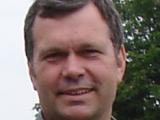
Christoph Jacobi
Leipzig University
Institute for Meteorology
Upper Atmosphere
Institute for Meteorology
Upper Atmosphere
Germany

Ingrid Mann
Universitetet i Tromsø
Physics and Technology
Physics and Technology
Norway
Topic editors
Oliver Allanson
University of Birmingham
School of Engineering
Space Environment and Radio Engineering
School of Engineering
Space Environment and Radio Engineering
United Kingdom
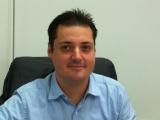
Georgios Balasis
National Observatory of Athens
"Institute for Astronomy
"Institute for Astronomy
Greece
Subject areas
Subject areas
Magnetosphere & space plasma physics
Space weather, climate, habitability, and life in (exo-)planetary context
Space weather, climate, habitability, and life in (exo-)planetary context

Jens Berdermann
German Aerospace Center Institute for Solar-Terrestrial Physics
Space Weather Impact
Space Weather Impact
Germany
Subject areas
Subject areas
Earth's ionosphere & aeronomy
Space weather, climate, habitability, and life in (exo-)planetary context
Space weather, climate, habitability, and life in (exo-)planetary context
Claudia Borries
Deutsches Zentrum für Luft und Raumfahrt e.V.
Germany
Subject areas
Subject areas
Earth's ionosphere & aeronomy
Dalia Buresova
Institute of Atmospheric Physics, CAS
Ionosphere and Aeronomy
Ionosphere and Aeronomy
Czech Republic
Subject areas
Subject areas
Earth's ionosphere & aeronomy
General or miscellaneous
General or miscellaneous
Ioannis A. Daglis
National and Kapodistrian University of Athens
Department of Physics
Department of Physics
Greece
Subject areas
Subject areas
Magnetosphere & space plasma physics
Space weather, climate, habitability, and life in (exo-)planetary context
Space weather, climate, habitability, and life in (exo-)planetary context
Nour Dahmen
ONERA
DPHY
DPHY
France
Subject areas
Subject areas
Magnetosphere & space plasma physics
Space weather, climate, habitability, and life in (exo-)planetary context
Space weather, climate, habitability, and life in (exo-)planetary context
Johan De Keyser
Royal Belgian Institute for Space Aeronomy
Space Physics Division
Space Physics Division
Belgium
Subject areas
Subject areas
Small bodies (dwarf planets, asteroids, comets) to dust
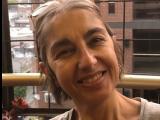
Ana G. Elias
Universidad Nacional de Tucuman (UNT)
Facultad de Ciencias Exactas y Tecnología
Physics
Facultad de Ciencias Exactas y Tecnología
Physics
Argentina
Subject areas
Subject areas
Earth's ionosphere & aeronomy
General or miscellaneous
General or miscellaneous

Bernard Foing
Leiden University
Netherlands
Subject areas
Subject areas
Exoplanets systems
Terrestrial planets systems
Terrestrial planets systems
Theodore Giannaros
National Observatory of Athens
Institute of Environmental Research and Sustainable Development
Institute of Environmental Research and Sustainable Development
Greece
Subject areas
Subject areas
Terrestrial atmosphere and its relation to the sun
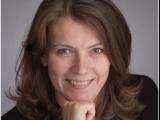
Margit Haberreiter
PMOD/WRC
solar physics, solar irradiance variation, Sun-Earth connection, Space Weather
solar physics, solar irradiance variation, Sun-Earth connection, Space Weather
Switzerland
Subject areas
Subject areas
Space weather, climate, habitability, and life in (exo-)planetary context
Sun & heliosphere
Sun & heliosphere

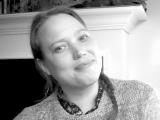
Alexa Halford
NASA Goddard
Heliophysics
Heliophysics
United States
Subject areas
Subject areas
Earth's ionosphere & aeronomy
Magnetosphere & space plasma physics
Space weather, climate, habitability, and life in (exo-)planetary context
Magnetosphere & space plasma physics
Space weather, climate, habitability, and life in (exo-)planetary context


Keisuke Hosokawa
University of Electro-Communications
Japan
Subject areas
Subject areas
Earth's ionosphere & aeronomy
General or miscellaneous
General or miscellaneous


Christoph Jacobi
Leipzig University
Institute for Meteorology
Upper Atmosphere
Institute for Meteorology
Upper Atmosphere
Germany
Subject areas
Subject areas
General or miscellaneous
Small bodies (dwarf planets, asteroids, comets) to dust
Terrestrial atmosphere and its relation to the sun
Small bodies (dwarf planets, asteroids, comets) to dust
Terrestrial atmosphere and its relation to the sun

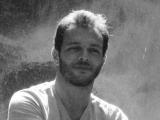
Christos Katsavrias
National and Kapodistrian University of Athens
Physics
Physics
Greece
Subject areas
Subject areas
Magnetosphere & space plasma physics

Andrew J. Kavanagh
British Antarctic Survey
Space Weather and Atmosphere
Space Weather and Atmosphere
United Kingdom
Subject areas
Subject areas
General or miscellaneous
Terrestrial atmosphere and its relation to the sun
Terrestrial atmosphere and its relation to the sun
Elena Kronberg
Ludwig-Maximilians-Universität München
Geophysics
Geophysics
Germany
Subject areas
Subject areas
Magnetosphere & space plasma physics
Space weather, climate, habitability, and life in (exo-)planetary context
Space weather, climate, habitability, and life in (exo-)planetary context
Wen Li
Boston University
United States
Subject areas
Subject areas
Magnetosphere & space plasma physics
Ingrid Mann
Universitetet i Tromsø
Physics and Technology
Physics and Technology
Norway
Anna Milillo
National Institute of Astrophysics
Institute for Space Astrophysics and Planetology
Institute for Space Astrophysics and Planetology
Italy
Subject areas
Subject areas
General or miscellaneous
Magnetosphere & space plasma physics
Magnetosphere & space plasma physics
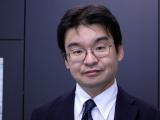
Yoshizumi Miyoshi
Nagoya University
Institute for Space-Earth Environmental Research
Institute for Space-Earth Environmental Research
Japan
Subject areas
Subject areas
General or miscellaneous
Magnetosphere & space plasma physics
Magnetosphere & space plasma physics

Stephen J. Mojzsis
Univeristy of Bayreuth
Bayerisches Geoinstitut (BGI)
Bayerisches Geoinstitut (BGI)
Germany
Subject areas
Subject areas
Exoplanets systems
Small bodies (dwarf planets, asteroids, comets) to dust
Terrestrial atmosphere and its relation to the sun
Small bodies (dwarf planets, asteroids, comets) to dust
Terrestrial atmosphere and its relation to the sun
Christopher Mouikis
University of New Hampshire
EOS
Space Science Center
EOS
Space Science Center
United States
Subject areas
Subject areas
General or miscellaneous
Magnetosphere & space plasma physics
Magnetosphere & space plasma physics
Tadashi Mukai
Kobe University
Japan
Subject areas
Subject areas
Small bodies (dwarf planets, asteroids, comets) to dust
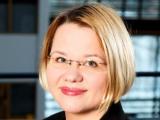
Minna Palmroth
University of Helsinki
also at: Finnish Meteorological Institute
also at: Finnish Meteorological Institute
Finland
Subject areas
Subject areas
General or miscellaneous
Magnetosphere & space plasma physics
Magnetosphere & space plasma physics

Ernesto Palomba
Italy
Subject areas
Subject areas
Terrestrial planets systems
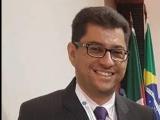
Igo Paulino
Universidade Federal de Campina Grande
Department of Physics
Department of Physics
Brazil
Subject areas
Subject areas
Earth's ionosphere & aeronomy
Terrestrial atmosphere and its relation to the sun
Terrestrial atmosphere and its relation to the sun

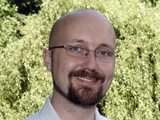
Petr Pisoft
Charles University
Faculty of Mathematics and Physics
Department of Atmospheric Physics
Faculty of Mathematics and Physics
Department of Atmospheric Physics
Czech Republic
Subject areas
Subject areas
General or miscellaneous
Terrestrial atmosphere and its relation to the sun
Terrestrial atmosphere and its relation to the sun

Jonathan Rae
University College London
United Kingdom
Subject areas
Subject areas
Magnetosphere & space plasma physics
Space weather, climate, habitability, and life in (exo-)planetary context
Space weather, climate, habitability, and life in (exo-)planetary context
Elias Roussos
Max Planck Institute for Solar System Research (MPS)
Planetary Science Department
Planetary Science Department
Germany
Subject areas
Subject areas
General or miscellaneous
Giant planets systems
Magnetosphere & space plasma physics
Giant planets systems
Magnetosphere & space plasma physics
Ingmar Sandberg
National and Kapodistrian University of Athens
Department of Aerospace Science and Technology
Department of Aerospace Science and Technology
Greece
Subject areas
Subject areas
Magnetosphere & space plasma physics
Space weather, climate, habitability, and life in (exo-)planetary context
Space weather, climate, habitability, and life in (exo-)planetary context
Erik Schmölter
German Aerospace Center, DLR e. V.
Institute for Solar-Terrestrial Physics
Institute for Solar-Terrestrial Physics
Germany
Subject areas
Subject areas
Earth's ionosphere & aeronomy
Nick Sergis
Office of Space Research and Technology Academy of Athens
Office for Space Research and Technology
Office for Space Research and Technology
Greece
Subject areas
Subject areas
General or miscellaneous
Giant planets systems
Magnetosphere & space plasma physics
Giant planets systems
Magnetosphere & space plasma physics
Gunter Stober
University Bern
Institute of Applied Physics
Microwave Physics
Institute of Applied Physics
Microwave Physics
Switzerland
Subject areas
Subject areas
Small bodies (dwarf planets, asteroids, comets) to dust
Terrestrial atmosphere and its relation to the sun
Terrestrial atmosphere and its relation to the sun
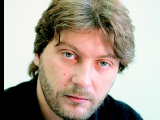
Kleomenis Tsiganis
Aristotle University of Thessaloniki
Department of Physics
Department of Physics
Greece
Subject areas
Subject areas
Small bodies (dwarf planets, asteroids, comets) to dust

Maria Usanova
University of Colorado Boulder
LASP
LASP
United States
Subject areas
Subject areas
General or miscellaneous
Magnetosphere & space plasma physics
Space weather, climate, habitability, and life in (exo-)planetary context
Magnetosphere & space plasma physics
Space weather, climate, habitability, and life in (exo-)planetary context
Vivien Wendt
Deutsches Zentrum für Luft- und Raumfahrt e.V.
Solar-Terrestrial Coupling Processes
Solar-Terrestrial Coupling Processes
Germany
Subject areas
Subject areas
Earth's ionosphere & aeronomy
Terrestrial atmosphere and its relation to the sun
Terrestrial atmosphere and its relation to the sun
Stephanie C. Werner
PHAB, University of Oslo
Centre for Planetary Habitability
Geosciences
Centre for Planetary Habitability
Geosciences
Norway
Subject areas
Subject areas
Terrestrial planets systems
Peter Wurz
Universität Bern
Physikalisches Institut
Space Science and Planetology
Physikalisches Institut
Space Science and Planetology
Switzerland
Subject areas
Subject areas
Exoplanets systems
Small bodies (dwarf planets, asteroids, comets) to dust
Sun & heliosphere
Small bodies (dwarf planets, asteroids, comets) to dust
Sun & heliosphere

